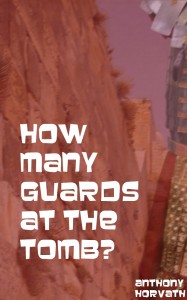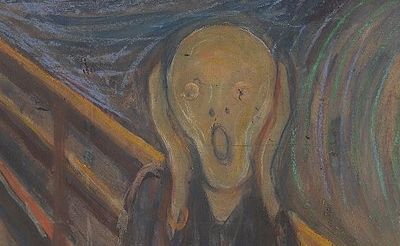Anthony Horvath, PhD, is a Christian author, publisher, and apologist who works out of central Wisconsin. Contact him at director @ athanatosministries.org.
The word for the kind of work I do is ‘apologetics.’ It is from the Greek. Many joke: “Does this mean you are in the business of saying you are sorry?” Very funny! It actually means, “to make a defense.” Christian apologetics is the ‘defense of the Christian faith.’
This defense usually happens along intellectual grounds, and for some Christians that is an insult to the very idea of ‘faith.’ Obviously, it matters how we are defining our words, but suffice it to say, it is indeed possible to dwell too much on facts and arguments, but it still remains that the same God that brings us closer to him through faith in Christ also made our brains. Moreover, Jesus himself never relied on mere assertions and platitudes. He backed up his claims by miracles and appeals to the Scriptures. See, for example, John 14:11.
So, what kind of work is ‘apologetics,’ anyway? Well, one of the things I spend a lot of time doing is simply correcting misconceptions about the Bible, God, Jesus, and Christianity, and all the rest. Many times, I am talking with a non-Christian. Often, however, it is another Christian. When it is a Christian, they are often surprised to learn that a small detail can matter so much. However, when you spend as much time talking with people who have fallen away from the faith as Christian apologists tend to do, you learn that it was the small details that added up to fuel a crisis of faith in the first place.
This Easter, I want to call attention to one of those small details.
On this blog, one of the most popular articles I have posted is about the number of guards at the tomb of Jesus. Presumably, churches are putting on passion plays, and are looking for insight about that part of the play. (You may have noticed elsewhere in this magazine that my own ministry is doing a passion play this summer, called “The Passion Experience.”) Now, if you ask a group of Christians how many guards were at Jesus’ tomb, the general response will be that there were two guards.
Where does this idea come from?
It almost certainly tracks back to Christian art over the centuries, which almost always depicts the tomb with only two guards. This is a ‘fact’ that Christians believe about the resurrection account that is not derived from the Scriptures, but from artistic portrayals. Even the recent movie, “Risen” only has two guards at the tomb. I don’t mention this to condemn artistic portrayals. I am just explaining where this particular view probably arises, although it does naturally speak to the power of art more generally, which is something else my ministry spends a lot of time talking about.
Why does it matter?
Who cares how many guards were at the tomb?
Who cares if they were Roman guards, or temple guards, or both?
Imagine that you were evaluating whether or not it was a true fact of history that Jesus rose from the dead. If ever as a Christian there was a fact of the faith that one is counting on to be actually true and real, whether or not Jesus was truly resurrected is it! But many people challenge the historicity of the resurrection on the grounds that there are many other possible explanations for the disappearance of Jesus’ body, and the notion that the guards fell asleep and the body was, pardon the expression, spirited off somehow, is an obvious one to consider.
If there are only two guards, it is easy enough to imagine that they could have fallen asleep and someone snuck by them. But what if there were sixteen guards? What if there was even more than that? What if the penalty for falling asleep while on guard was death? For Roman guards, that is exactly the consequence for falling asleep. Things aren’t that much better for the Jewish guards. For example, in Acts 12, Herod orders the execution of the guards that were put in charge of watching Peter. If that is the penalty for losing a live person, imagine the penalty for losing a dead body!
Acts 12 also gives us an explicit reference to the number of guards, telling us it was sixteen.
Jesus’ death occurred during the Passover, when Jerusalem swelled from a population of a hundred thousand or so to more than a million (according to Josephus), and many of these were sympathetic to Jesus, and nearly all of them were hostile to the Romans. It was for this reason that Pilate was in Jerusalem in the first place. Given this hostility and the great crowds that were present, it is really inconceivable that fewer than sixteen guards would be tasked with watching the tomb, and it is equally incredible that all sixteen would have fallen asleep.
This little fact would have been well known to the Jews in Jerusalem, which is probably why when Jesus’ enemies concocted the story that the guards had fallen asleep… no one believed them.
No one believed them then, and no one should believe it now.
Do not underestimate the power of such little facts to accumulate and strengthen the faith of young Christians when they are taught such things. Similarly, do not underestimate the weight placed on a young person’s faith when a series of little facts seems to add up to the idea that Christianity is a fraud. Today more than ever, the little facts matter.




1 comments
Great post! And facts actually do matter; it was evidence which brought me back from my own crisis of faith many years ago. God gives us what we need when He knows we’re struggling?